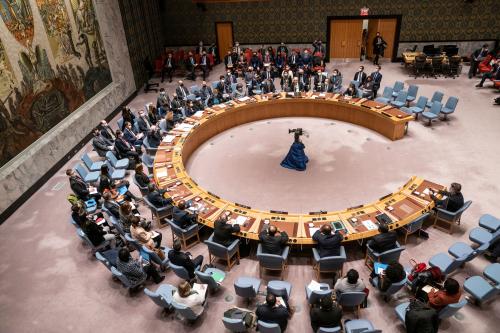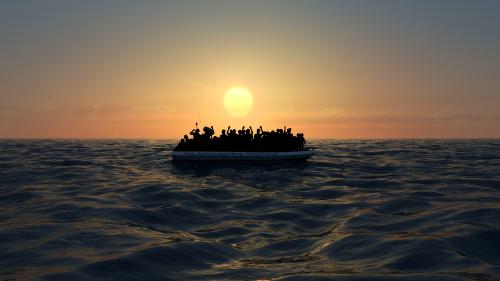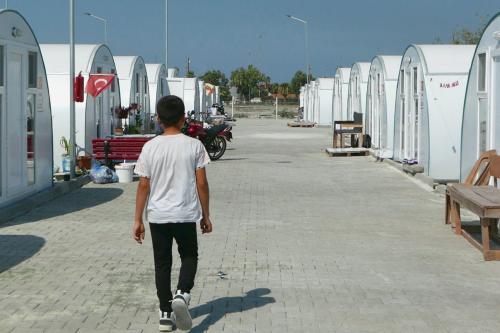As we see the Russian invasion continue, all of us are witnessing the fastest-growing refugee flow in modern history. As we write these lines, over 3.1 million Ukrainians have fled their homes seeking refuge in other countries—nearly 2 million of them to Poland, representing an about 5 percent increase in its population. Countries like Hungary, Moldova, Romania, and Slovakia are also receiving large, unprecedented numbers of refugees in relation to their populations.
While the hope is that the current global solidarity toward Ukrainian refugees will outlive the news cycle, there have been too many instances in the past of displaced populations seeing increased barriers to resettlement in receiving countries as the crisis intensifies. Local government authorities in the region are already expressing concerns about their capacity to continue to absorb refugees, though the parameters to define that are often arbitrary. However, a careful look at the evidence teaches us that countries should seize the opportunity to take in refugees from Ukraine instead of formulating policies to keep them from coming.
A careful look at the evidence teaches us that countries should seize the opportunity to take in refugees from Ukraine instead of formulating policies to keep them from coming.
The economic gains for countries receiving these refugees could be enormous, if accompanied by the right public policy. Evidence of this abounds.
The case of immigration from the former Soviet Union to Israel is particularly interesting. Between 1989 to 1995 over 600,000 immigrants from Ukraine and other parts of the former Soviet Union arrived in Israel, increasing the population of the country by nearly 15 percent in only five years. This wave of immigrants seeking a new home, alongside tremendously effective public policy, played a big role in Israel becoming the “startup nation” we know today. When this population immigrated to Israel, they brought important and in-demand STEM skills to the growing technology sector, and, at the same time, the government devoted public funds to indirectly invest in startup firms run by teams that included immigrants. Thirty years later, the entrepreneurial and innovation ecosystem of Israel–almost nonexistent back then—is a model to follow for many other countries, including developed nations.
Another story of interest is on Vietnamese refugees in the U.S., whose exodus started in 1975—following the fall of Saigon to the communist North Vietnamese—when the U.S. military evacuated over 100,000 refugees from South Vietnam. Between 1975 and 1994, around 1.4 million Vietnamese refugees were resettled in the U.S. Their presence had a positive effect on trade and on investment between the U.S. and Vietnam, thanks to the international business networks that refugees created between countries. Trade and investment are important determinants of globalization and serve as catalysts of economic growth.
In terms of contribution to science, the story of the United States is of particular interest. Before and during World War II, thousands of Jewish scientists fled from Europe to America and integrated in American universities. They were instrumental in developing scientific progress in ways that otherwise wouldn’t have been achieved, as this study shows. John von Neumann, a Hungarian Jew is one example of this historical phenomenon: After resettling in the U.S., he became a founding figure in computing, as well as a core member of the team of the Manhattan Project that developed nuclear weapons.
The positive impact of refugees can be long lasting—an example can be found in this study on the flow of 1.2 million Greek Orthodox refugees to Greece after the Greco-Turkish war during 1919 to 1922, which increased the Greek population by 20 percent. The study shows that today, the same localities in Greece that welcomed more refugees enjoy higher levels of household wealth, greater educational attainment, and larger financial and manufacturing sectors. Another study looks at how the resettlement of the religiously persecuted French Huguenots in Brandenburg-Prussia in the late 17th century resulted in substantial long-term effects of Huguenot settlement on the productivity of textile manufactures, an industry that Huguenots were experienced in before resettling.
The economic gains for countries receiving these refugees could be enormous, if accompanied by the right public policy.
The importance of refugee resettlement goes beyond the benefits to the destination. Over half a million refugees from the former Yugoslavia settled in Germany in the 1990s following the bloody war in the Balkans that ended in the disintegration of the country. They not only integrated into the German labor force, but also contributed significantly to the reconstruction of their home countries after the war, as this study shows, through the development of export industries upon their return.
The millions of Ukrainian refugees now seeking refuge will be the center of many of these stories in the decades to come. After all, we know that refugees tend to be entrepreneurial at a higher rate than other immigrants, and as such, not only create jobs, but also boost dynamism in their hosting communities.
It is time to change the narrative. If given a chance, Ukrainian refugees—and all other refugees—are assets, and not liabilities. Thus, countries should be competing to receive and invest in refugees.









Commentary
Countries should seize the opportunity to take in Ukrainian refugees—it could transform their economies
March 17, 2022